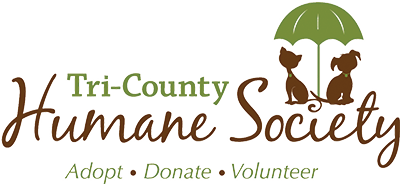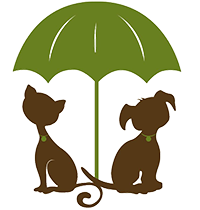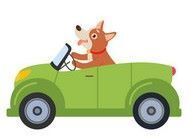Does your sudden appearance in the kitchen at your dog's mealtime elicit a glare and a growl? Does a gift of rawhide or marrow bone send your usually mild-mannered canine diving under the nearest
coffee table while snarling, "Grrr, mine!"? If these scenarios sound familiar to you, your dog is suffering from canine possession aggression (CPA), also known as food or object guarding.
The Trouble with Kibbles
In most cases of CPA, the dog no longer views you as the provider of good things, but rather as the scoundrel who might relieve him or her of hard-earned treasures such as meals, treats, chew toys, or, in some instances, forbidden objects such as shoes and gloves. If you remove these items as a punishment when he growls, it will only serve to further convince your dog that his suspicions about you were right all along.
Make a Date with Your Dog — for Dinner
How often have you heard people say, "Leave the dog alone while he eats"? Although it probably makes sense to keep toddlers away from Shep at mealtime, a dog can get an inflated sense of himself if left alone while he eats from puppyhood on. After all, in a dog or wolf pack, the alpha or top dog gets to eat his fill first, uninterrupted.
Instead, family members should be present while the dog eats — starting when he or she is a puppy. From time to time, it is a wise idea to approach the bowl and add a little something extra — some scrambled egg, a brokenup biscuit, a bite of turkey hotdog, or some string cheese.
Bowling Him Over
If you have an older dog who has already perfected his "Cujo Eats" imitation and it isn't safe to approach his bowl, a different strategy is needed.
Step one is to do away with his food bowl entirely for a week or two. Shep will be dining out of your hand, just a few kibbles at a time.
Step two marks the return of the food bowl, but it should remain empty until the handler passes by and drops a few kibbles in it. After those are eaten up, drop small handfuls into your dog's bowl at intervals of one to three minutes until the whole meal has been consumed.
By now your dog should be practically begging you to approach his bowl.
In step three, put a semi-filled bowl on the floor and, as you pass by, drop in a few betterthan-kibbles tidbits. On your next pass by the bowl, add the remaining kibbles.
Step four is to put a full food bowl on the floor as your dog holds a sit and stay. Release him with a cheery "OK." Then, once or twice a week, call your dog away from his bowl during mealtime and reward him with a tasty tidbit for coming to you. Using your sit-and-stay, wait, and take-it commands with the dog will make it absolutely clear to Shep who owns the kitchen and the tasty morsels in it.
Each of these steps should be undertaken for 10 to 14 days at each meal before going to the next step. While you are grappling with a food guarding problem, your dog should wear a leash at mealtimes as a safety measure, but don't use it to control your dog unless you are in jeopardy of being hurt. Since guarding behaviors seldom happen in a vacuum and can often signal other problems in the dog-and-handler relationship, a basic obedience course is highly recommended to underscore handler leadership to the dog.
Finally, if you experience any backsliding, return to step one. If you do not succeed or your dog is severely aggressive around all food products and paraphernalia, hire a certified dog trainer or applied animal behaviorist to help bring this conflict to resolution.
Information adapted from Jacque Lynn Schultz, CPDT









